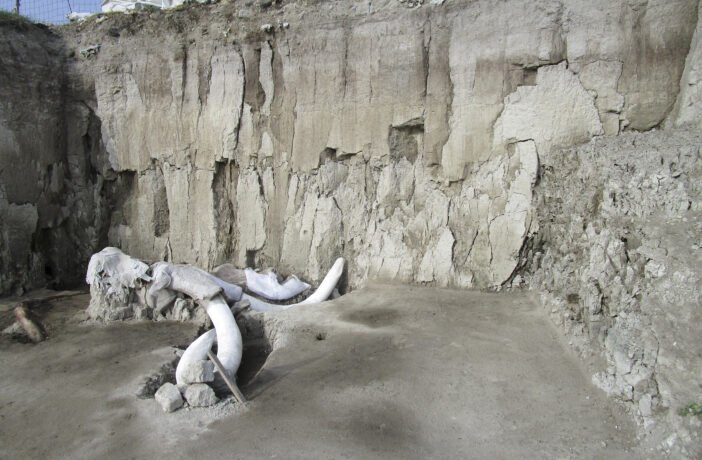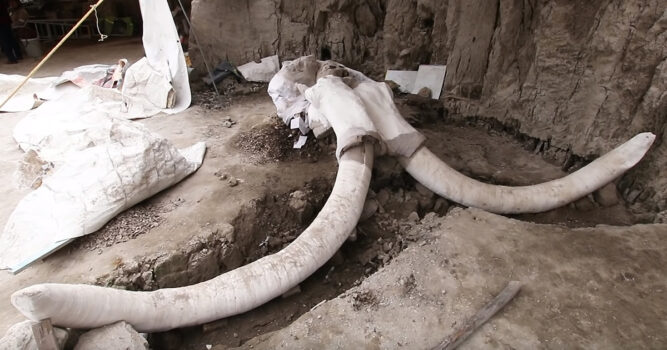
Massive Woolly Mammoth Skeletons Found In 2 Human-Made Mammoth Traps In Mexico
14 massive skeletons of at least 14 woolly mammoths have been discovered in traps that were made by humans 15,000 years ago in Mexico.
Researchers uncovered 2 human trips in Tultepec, a place north of Mexico City.
The traps that were discovered in Tultepec are the first mammoth traps discovered.
Researchers believe hunters could have used torches or branches to her the large woolly Mammoths into the traps.
According to reports, over 800 bones were found in the human traps.
The new discovery could help researchers understand how humans managed to hunt and trap mammoths.

Researchers from the National Institute of Anthropology and History, more traps could soon be discovered in the same area.
Archeologists previously thought that early humans only killed mammoths if they were hurt or trapped in something. But the new discovery proves that the hunts were planned.
According to Diego Prieto Hernandez, the director of the National Institute of Anthropology and History, the new discovery “represents a watershed, a turning point in what we until now imagined to be the interaction between hunter-gatherers with these huge herbivores.”
The pits that were discovered by the National Institute of Anthropology and History are around 1.7 meters deep and are 25 meters in diameter.

When it comes to the last woolly mammoths that were roaming our planet, they died of thirst while living on a remote island off the coast of Alaska 5,600 years ago.
Most of the mammoths died 10,500 years ago.
Massive human hunting and changes in the environment were the reasons why woolly mammoths went extinct.
Professor Russell Graham of the Pennsylvania State University said, “As the other lakes dried up, the animals congregated around the water holes. They were milling around, which would destroy the vegetation – we see this with modern elephants.”

Professor Graham added, “And this allows for the erosion of sediments to go into the lake, which is creating less and less freshwater. The mammoths were contributing to their own demise.”
The last group of Woolly Mammoths lived on the St. Paul Island, and during their time, they faced a lot of problems.
5,600 years ago, the earth was warming up after the Ice Age, which caused the levels of the sea to rise.
As sea levels rose, the island that they were living on shrink in size, and some of its lakes got lost to the ocean as sea salt water flowed into them. Without proper access to water, the mammoths died.